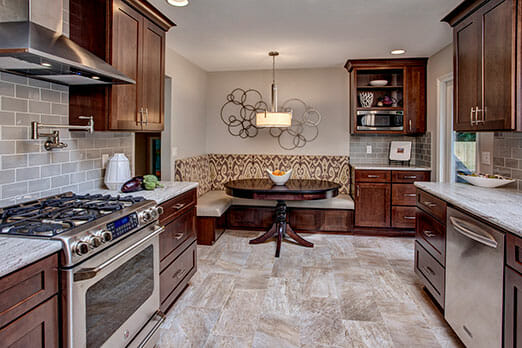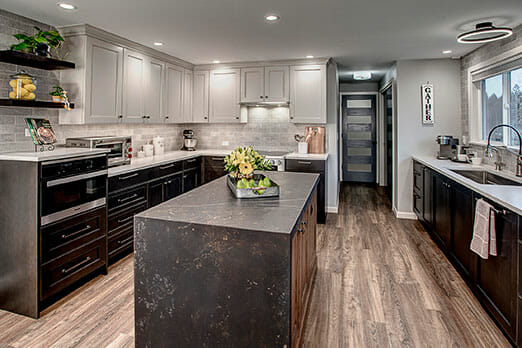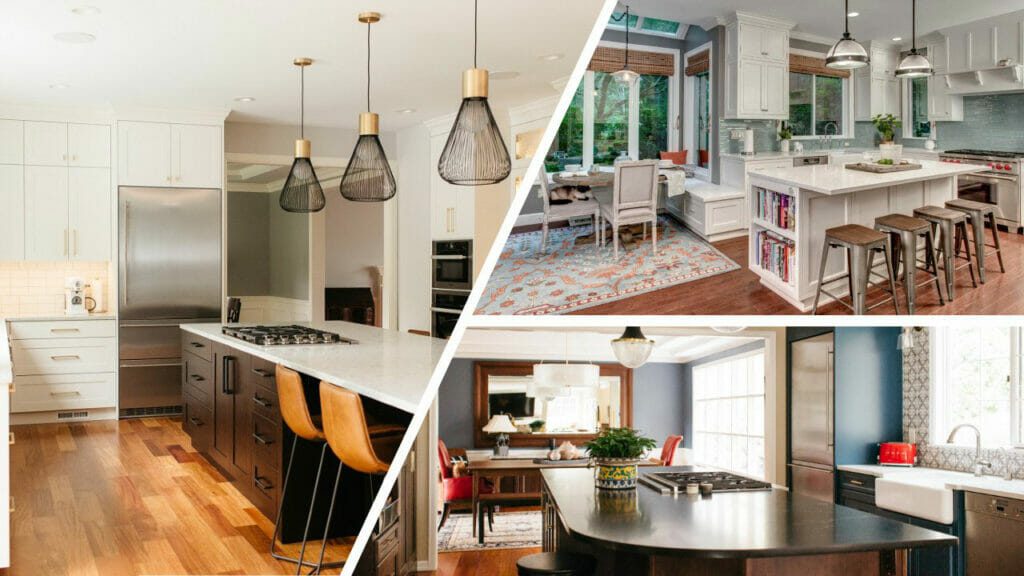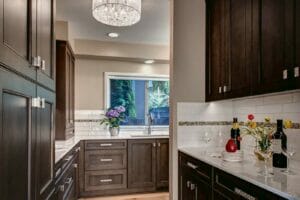You have done your research, talked to different design-build remodeling companies, and finally picked the right remodeler for you. Now you are ready to work with them to design and create the space of your dreams! Hours of scrolling and picking out images on Houzz and Pinterest may have given you a slight idea of what type of design style you gravitate towards. But do you know which design style is best for you? Most interior design falls into three categories – traditional, transitional, and modern.
Traditional Design Style

In the age of constantly changing trends, the idea of a traditional look might seem dated. But the majority of homeowners already live in a traditional home that is composed with elements like crown molding and built-in cabinetry. A traditional home is a blank canvas that can be updated with colors and materials, art, and antiques. Going with a traditional design within your new space will also keep with the continuity of the rest of the home and provide a seamless transition.
Modern or Contemporary Design Style

Modern and contemporary homes are a growing trend but still less common than traditional and transitional spaces. This style is characterized by informal and open floor plans and a lack of antiquated ornamentation. These spaces often also include clean lines, neutral colors, and mixed metals. Lots of large windows keep the home feeling open and bright. Natural materials and stones are also popular in modern and contemporary homes.
Transitional Design Style

The most popular design style is transitional due to its merging of both traditional and modern. It is a great choice for those who wish to update a space without having is starkly clash with the rest of their traditional home. Elements of transitional design include neutral colors, contrasting textures, and minimalism to a certain degree.
All three design styles have their pros and cons. No matter what design style you choose to go with, the most important thing is to take the rest of your home into consideration and ensure that there is continuity throughout your space.
You have done your research, talked to different design-build companies, and finally picked the right remodeler for you. Now you are ready to work with them to design and create the space of your dreams! Hours of scrolling and picking out images on Houzz and Pinterest may have given you a slight idea of what type of design style you gravitate towards. But do you know which design style is best for you? Most interior design falls into three categories – traditional, transitional, and modern.



